Generate QR Code and Micro QR Code in C++
Overview
The QR Code family corresponds to 2D matrix barcodes of square shape (except Rectangular Micro QR Code (rMQR) that will be added to Aspose.BarCode in the nearest future). Accordingly, QR Code and Micro QR Code barcodes require square space to be placed on a surface. This group of symbologies has large data density and enables encoding both byte streams of data and arbitrary information represented as a set of Unicode symbols. In Aspose.BarCode for C++, the data encoding in Unicode is performed using Extended Channel Interpretation (ECI) and enables different encoding modes among which UTF8 is the most widespread one.
At the minimal error correction level, the QR Code symbology can encode up to 7,089 numerical (4,296 alphanumeric) digits or 2,953 bytes, while the Micro QR Code standard allows encoding at most 35 numerical (21 alphanumeric) or 15 bytes. Micro QR Code is used to generate barcodes of reasonably small size; at the same time, to enable such a possibility, it does not support Extended Channel Interpretation (ECI) and does not support encoding Unicode symbols. Specifically, the M1 version allows encoding only 5 numerical digits, while M2 can encode 10 numerical or 6 alphanumeric symbols. This capacity may be sufficient to encode particular industrial markers.
The key features of QR codes are summarized below:
- very high barcode recognition speed owing to geometrical specifics
- barcode reading capability under severe 3D distortions
- encoding byte streams of data
- encoding Unicode symbols using ECI (is not valid for Micro QR Code)
- high data encoding density
- customizable error correction that allows recovering up to 30% of the barcode data at the maximal level H
However, QR Code barcodes are sensitive to substantial damages of a target pattern as they can hinder barcode detection in the scanned image.
QR and Micro QR Code Generation Modes
In Aspose.BarCode for C++, it is possible to select QR Code or Micro QR Code barcodes and its versions to be generated using two properties of class QrParameters: QrEncodeType and QrVersion that are set to Auto by default.
The first option is to initialize the QrVersion field that allows setting the required version of QR Code or Micro QR Code. If the inputted information is less than the capacity of the selected version, the remaining space is filled with padding symbols; if it is surplus, an exception is thrown.
The second option can be used when QrVersion is set to Auto. In this case, the QrEncodeType field can be initialized to select the barcode type according to the input data size. This property can take the following values:
- Auto. First, the most suitable Micro QR Code version (from M1 to M4) is searched; then, QR Code versions (from Version01 to Version40) are iterated over to find the most appropriate one. If the capacity of Version40 is not sufficient for the input information, an exception is thrown.
- ForceQR. The most suitable QR Code version (from Version01 to Version40) is set.
- ForceMicroQR. The most suitable Micro QR Code version (from M1 to M4) is selected. If the capacity of M4 is not sufficient to encode the inputted data, an exception is thrown.
Automatic Sizing
Barcode images below are provided to illustrate how to generate QR Code barcodes of various types using automatic size settings.
Size Setting Mode |
Auto |
ForceQR |
ForceMicroQR |
|---|---|---|---|
 |
 |
 |
Manual Version Selection
Aspose.BarCode for C++ enables manual settings for the required version of QR Code barcodes to be generated. To do this, it is necessary to initialize the QRVersion property of class QrParameters. This property can take the values from Version 01 to Version 40 for QR Code and from M1 to M4 for Micro QR Code. Sample barcode labels demonstrated below are given to explain how to generate QR Code barcodes by setting the required version manually.
QR Version |
Is Set to QR Version 05 |
Is Set to Micro QR Version M4 |
|---|---|---|
 |
 |
Data Encoding Modes
Aspose.BarCode for C++ supports several most widespread data encoding modes, including the Unicode standard. To set the required encoding mode, it is necessary to initialize the QrEncodeMode property of class QrParameters. This property can take the following values:
- Auto. This encoding mode implies that the data passed to CodeText is encoded according to the value of the CodeTextEncoding property that gets the encoding of the inputted symbols (by default, it is set to UTF8).
- Bytes. This mode is used to work with streams of bytes and can encode values from 0 to 255. If a byte stream contains digits greater than 255, the UTF16LE encoding is applied.
- Utf8BOM and Utf16BEBOM. These modes are applied to encode the input data using UTF8 and UTF16BE encodings, respectively; a byte order mark (BOM) character is added to indicate the used encoding. Note that it is preferable to use the ECIEncoding mode as it allows setting the encodings that are explicitly specified in the QR Code standard.
- ECIEncoding. This data encoding mode implies using the encoding listed in QrECIEncoding.
- ExtendedCodetext. In this mode, information passed to the CodeText property contains control words besides the main text to be encoded. These control words are intended to set advanced control over data encoding and allow including text with different encodings into a single QR Code barcode.
Auto Mode
The Auto data encoding mode utilizes the information from the CodeTextEncoding property to encode the input data. In case the text encoding is not defined explicitly in CodeTextEncoding, the binary encoding mode is applied.

Bytes Mode
The Bytes data encoding mode implies representing an input byte stream as an array of characters and then as a string. It allows encoding values from 0 to 255. In the case when a byte stream includes digits greater than 255, such a character is encoded as two bytes using the UTF16LE encoding (the lower byte first). To visualize the text under a QR Code barcode, the TwoDDisplayText property needs to be initialized.

Utf8BOM and Utf16BEBOM Modes
The Utf8BOM and Utf16BEBOM data encoding modes are used to encode the input data using UTF8 and UTF16BE standards, respectively, using a byte order mark (BOM) character that is placed before the first data symbol.
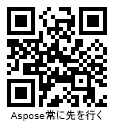
ECIEncoding Mode
In the ECIEncoding data encoding mode, the input data is processed using one of the encodings specified in QrECIEncoding. The present library implementation includes all well-known charset encodings. In addition, the extended channel interpretation identifier that corresponds to the current encoding is set. In this way, information about the way of decoding the barcode data is passed to decoders. The QrECIEncoding.UTF8 mode is the most preferable.
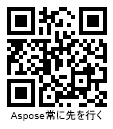
ExtendedCodetext Mode
Aspose.BarCode for C++ provides an advanced data encoding mode called ExtendedCodetext that enables flexible manual settings for QR Code barcode generation. Particularly, this mode includes specific encoding capabilities, such as using the multi-ECI mode and setting FNC symbols (characters used to detect and distinguish fields in variable-length application identifiers). Developers can facilitate the generation of barcodes with extended barcode text using class QrExtCodetextBuilder. To replace the text displayed under the generated barcode, it is necessary to initialize the TwoDDisplayText property. In the case of setting the multi-ECI mode, data processing is performed for each predefined encoding automatically. Otherwise, the information inputted into CodeText is encoded according to the value of CodeTextEncoding.
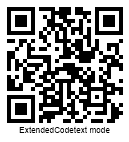
Error Correction Level Settings
The QR Code family supports four levels of Reed-Solomon error correction. This mechanism requires adding redundant information to a barcode so as to enable detecting and correcting errors automatically in the case of barcode label damages. In general, to restore 1% of errors, 2% redundancy is needed.
QR Code standards provide the following error correction levels.
Error Correction |
Recovery Capacity |
|---|---|
| Level L | 7% |
| Level M | 15% |
| Level Q | 25% |
| Level H | 30% |
QR Code symbologies except Micro QR can set any of the supported error correction levels. In turn, Micro QR enables different error correction levels for different barcodes types: M1 supports level L; M2 - levels L and M; M3 and M4 - levels L, M, and Q.
Error Correction Level |
Is Set to L |
Is Set to M |
Is Set to Q |
Is Set to H |
|---|---|---|---|---|
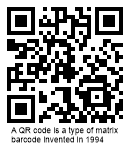 |
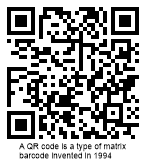 |
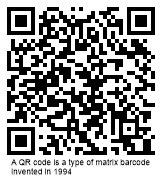 |
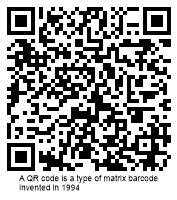 |
Structured Append Mechanism
QR Code symbologies (except Micro QR) support the possibility to generate composite barcodes using the so-called Structured Append mechanism. In this mode, the input data can be divided among different QR Code barcodes and then composed into a single image. Aspose.BarCode for C++ does not enable distributing information inputted into CodeText across several QR Code barcodes; however, it allows creating a composite QR Code label manually. This can be done by initializing the StructuredAppend property using the following fields:
- TotalCount - the number of barcodes in a composite QR Code image (can take values from 2 to 16)
- SequenceIndicator - the sequence number of the current barcode (starting from 0)
- ParityByte - a byte that serves as a checksum identifier. In the general case, it is calculated as XOR of all bytes in which UTF16BE symbols are encoded using two bytes
Sample barcode images provided below have been created using the structured append mechanism.
Structured Append QR Code |
First Type |
Second Type |
|---|---|---|
 |
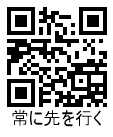 |
Aspect Ratio Settings
Aspect Ratio is the ratio between the height and the width of a barcode. To adjust barcode proportions using the X and Y coordinates in Aspose.BarCode for C++, it is required to set the AspectRatio property of class QrParameters. This property is defined as a relative coefficient to the value of the XDimension parameter. Generally, the value of AspectRatio should be set to 1. When it is necessary to adjust the proportions of generated QR Code barcodes, the AspectRatio property can be used. Sample barcode labels shown below have been generated using different aspect ratio settings.
Aspect Ratio |
Is Set to 1 |
Is Set to 2 |
|---|---|---|
 |
 |